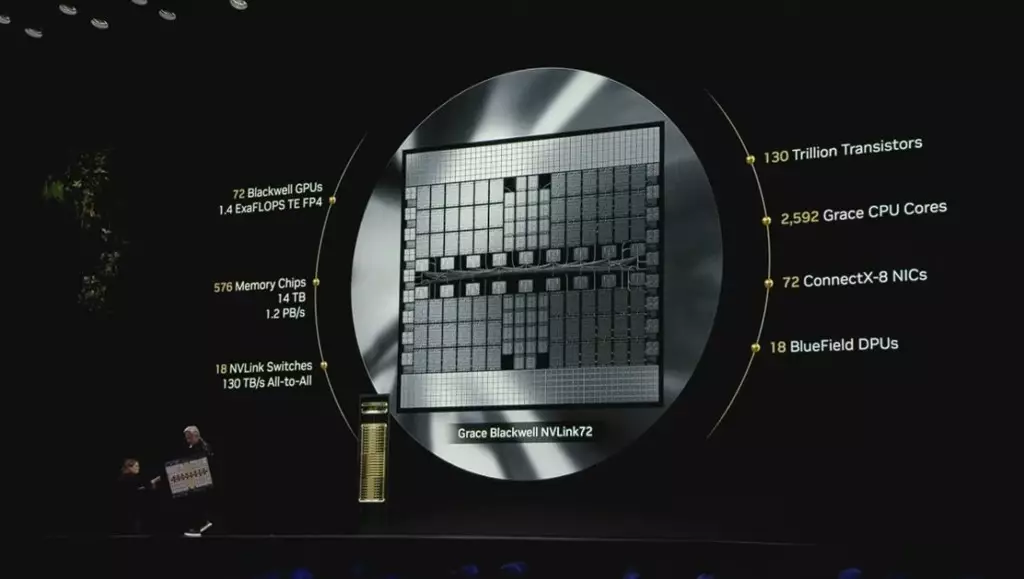In the ever-evolving realm of international trade and economics, U.S. President Donald Trump’s recent decision to exempt certain consumer electronics from hefty tariffs indicates a significant shift in strategy. Confronted with persistent stock market declines and the underlying pressures from the tech industry, the administration opted for a more measured approach. Earlier projections had placed tariffs on electronics, many of which are produced in China, at an astounding 145%, alongside a 10% global tariff. With semiconductors—vital components for an array of electronic devices—also exempted, this policy reversal appears to align more closely with the prevailing economic wisdom surrounding the technology sector.
The High Stakes of Economic Stability
Trump’s decision comes against a backdrop of escalating tension in the market, as evidenced by the 15% drop in stock values since he took office. While some analysts have warned of catastrophic price hikes—suggesting a $1,000 iPhone might soar to an astonishing $3,500 if produced domestically—this perspective may overlook fundamental realities of the U.S. tech landscape. With America only holding 14% of the global semiconductor market it once dominated, returning to self-sufficiency in chip production presents a monumental challenge. The reluctance to impose tariffs on tech products stems from an understanding that such measures may stifle consumer spending and doom the U.S. economy to stagnation.
Impact on Consumer Electronics and Innovation
The Consumer Technology Association’s forecast of a staggering increase in consumer prices offers a glimpse into the far-reaching implications of tariffs on electronics. Game consoles could see prices jump by 40%, while smartphones and laptops could cost 26% and 46% more, respectively. These exorbitant price spikes could dampen consumer interest during a critical time when technological innovation is paramount in keeping America competitive on a global scale. Trump’s previous threats of imposing significant tariffs on Chinese imports reflect a broader intent to wrest control of high-tech supply chains away from foreign nations. Yet, with these exemptions, it’s questionable whether investor confidence will be reinvigorated, as Trump’s unpredictable trade behavior continues to cast a long shadow over the market.
The Long Road to Domestic Chip Production
The complexities behind regaining market share in the semiconductor industry are not easily resolved through tariffs. Scott Almassy, a partner at PwC, warns that restoring dominance in chip manufacturing is a long-term endeavor, necessitating a coordinated strategy that extends beyond mere protectionist measures. While the bipartisan U.S. Chips and Science Act aims to facilitate the construction of domestic chip plants, experts like Duncan Stewart from Deloitte caution that merely injecting funds won’t transform the landscape overnight. The gradual timeline to increase the U.S. chip market share from 10% to around 14% by 2032 underscores the immense obstacles that lie ahead.
The Changing Landscape of Global Competition
A notable aspect of this evolving dialogue centers on the disparity in educational output between the U.S. and countries like China. As the demand for high-tech jobs grows, America finds itself at a disadvantage, producing fewer engineers and STEM professionals than its Chinese counterparts. This educational gap is alarming, especially as the tech industry increasingly looks for highly specialized talent. With the pressing need to bolster American competitiveness, Trump’s administration claims his tariff decisions and push for onshoring manufacturing will accelerate the transition to domestic production. However, the reality is that tariffs alone cannot remedy multifaceted issues created by a globalized economy.
The Role of Lobbying and Economic Influence
To complicate matters, the significant lobbying power of tech firms has raised eyebrows among policymakers who perceive a potential conflict of interest. Nonetheless, the high-paying jobs provided by tech companies are a crucial engine of growth in the modern economy, fostering innovation and requiring a robust educational framework. As American firms attempt to reshape their supply chains, the balance between local manufacturing and global competitiveness will remain a delicate dance. The Trump administration’s stance reflects a broader fear of over-reliance on foreign nations for critical technology; however, it remains to be seen if these measures will yield genuine progress or simply serve as a stopgap in a much larger puzzle.
While the complexities of trade relations and domestic production may incite heated debates, the pursuit of a balanced, sustainable, and innovative American tech sector is essential. The administration’s moves may bring short-term relief to certain industries, but without a solid foundation in education, research, and development, true competitiveness will likely remain elusive.

